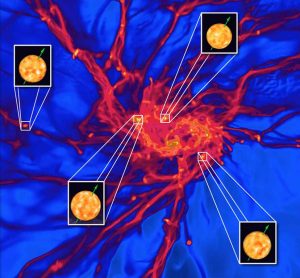Mysterious alignment of the rotation axis of stars in two clusters
The stars do not play dice! It is the extraordinary discovery that the researchers of the Department of Astrophysics-Laboratoire AIM of the CEA-Irfu made by succeeding in determining the orientation in the space of the axis of rotation of stars belonging to two clusters of stars, thanks to asteroseismology. About 70% of the observed stars have perfectly aligned axes of rotation, in formal contradiction with the star formation models which predict that these axes of rotation should be randomly distributed. Numerical simulations showed that, most likely, these stars had managed to retain the initial rotational motion of a cloud that gave rise to the cluster. This discovery, if confirmed in other clusters, could lead to reconsideration of the fundamental processes of star formation. These works make headlines in the journal Nature Astronomy of March 13, 2017
Watch the author's interview :

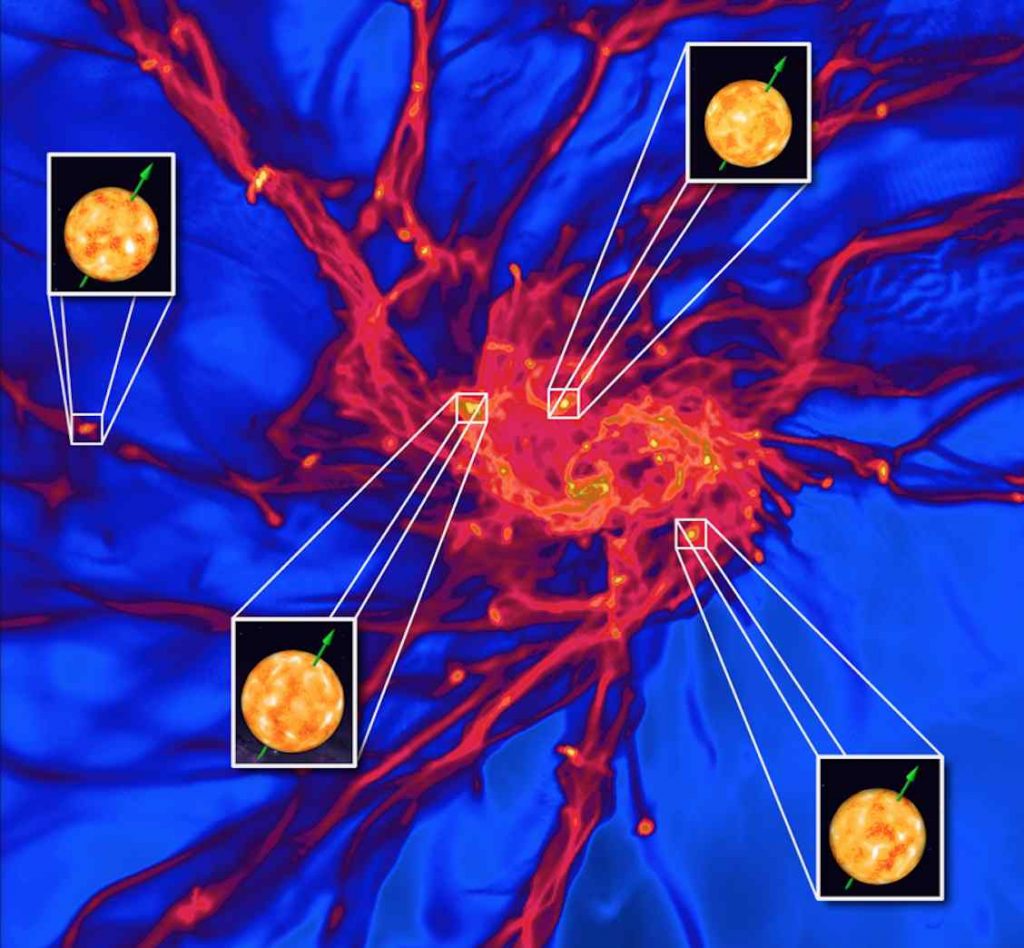
The power of asteroseismology
With the advent of high-precision spatial photometry, asteroseismology has demonstrated its ability to probe stellar interiors and to determine the fundamental parameters of stars such as mass, internal density or orientation in space. The team of researchers has chosen to analyze these very small variations in luminosity which reflect oscillations of the structure of stars and make it possible to go back to these parameters. They chose to analyze a sample of fifty red giant stars with a mass of 1 to 2 solar masses belonging to two large clusters of relatively old stars in the Milky Way, NGC 6791 aged of 8 billion years, and NGC 6819 aged of 2 billion years. Each of these clusters gathers stars that are born from the collapse of the same vast cloud of gas and dust. The data were obtained continuously for 4 years by NASA's Kepler satellite and enabled the analysis of thousands of oscillation modes that accurately determined the orientation of the axis of rotation of the stars in these clusters.
Watch the vidéo :

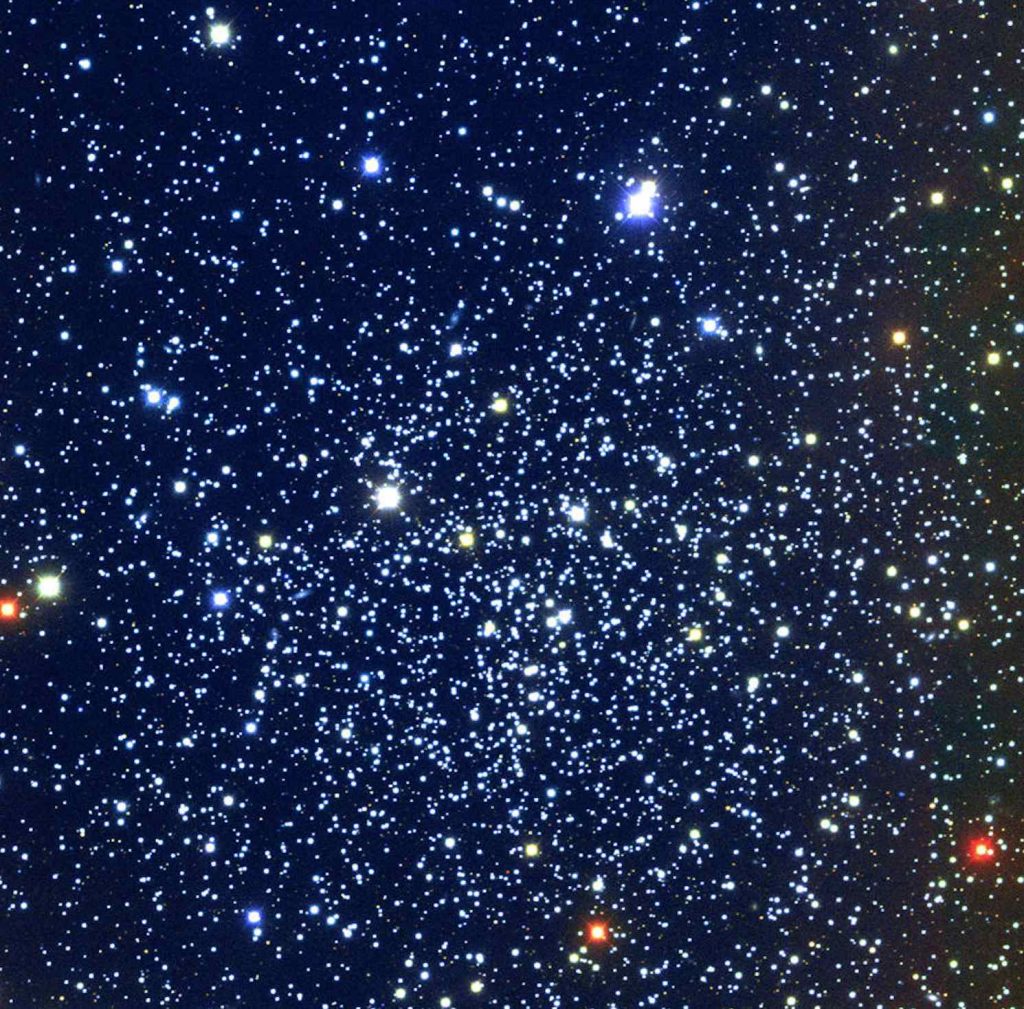
The result was surprising because almost all stars (about 70%) have axes of rotation that are strongly aligned with each other and point to a common direction in the sky. As noted by the first author Enrico Corsaro: “It was totally unexpected because normally the turbulence generated by the disordered movements of the gas in the cluster should have produced randomly distributed axes“. Given the morphology of the star cluster and the large distances separating the stars in an open cluster, scientists concluded that this strong alignment of the axes of rotation can not be due to tidal interactions and necessarily took place at the time of formation of the cluster, billions of years ago.
The stars keep the memory of their birth
Thanks to numerical 3D hydrodynamic simulations, astrophysicists were able to reproduce different conditions that presided over the formation of stars, varying the amount of energy related to the initial rotation of the proto-cluster compared to that associated with turbulence. They were able to determine with these simulations that the stars' axes line up efficiently when at least 50% of the total energy balance of the proto-clusters are associated with the rotation. This shows that the rotation properties of the gas cloud (especially its overall angular velocity) have been efficiently transferred to the individual stars forming inside the cloud. In addition, only stars with a sufficiently large mass (at least 0.7 solar mass) can inherit these properties. Consequently, the less massive stars do not possess this observed alignment of the axes of rotation, as their formation process has been largely dominated by turbulence which has blurred this angular movement.
Watch the video :

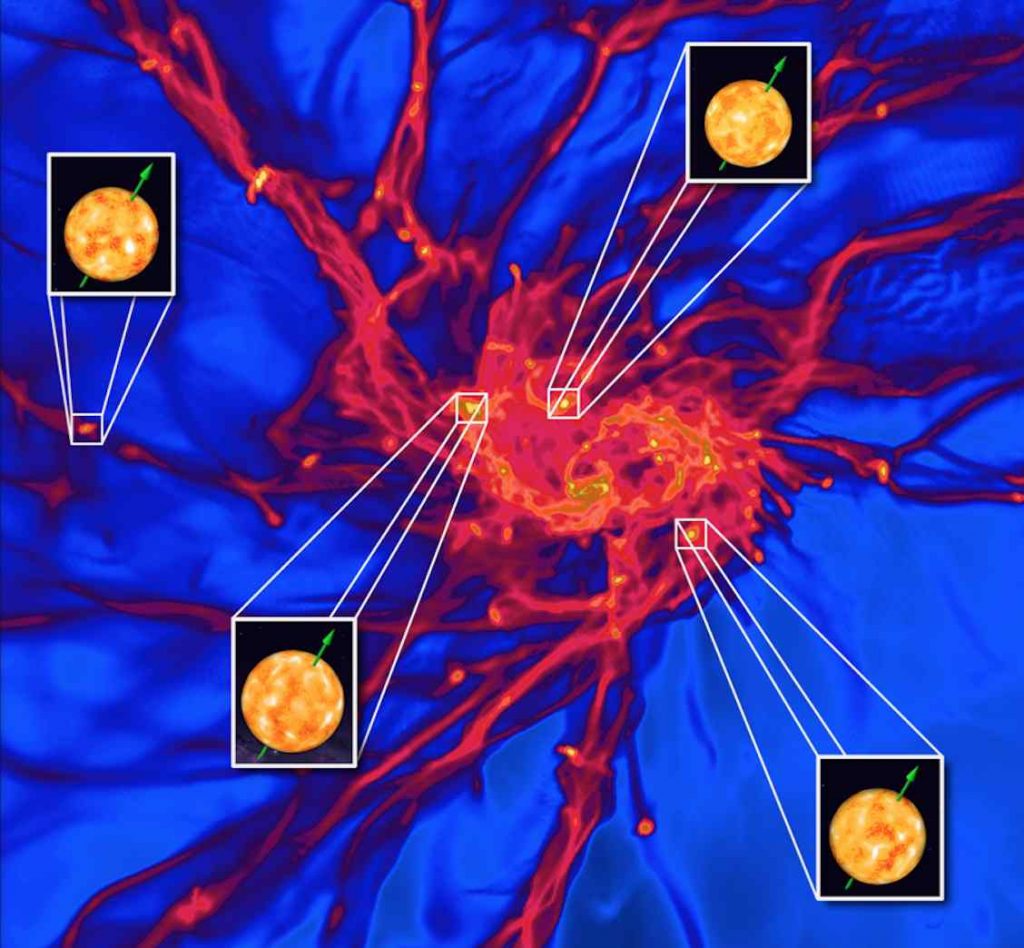
Rafael García, an astrophysicist at the CEA, sums up: “We now have new rules of the game. The study of the deep core of the distant red giants allows us to illuminate the primordial conditions of the formation of stars in stellar clusters of 8 billion Years, when the Universe was still very young. “
In the future, the observations made by the ESA European Space Agency M3 PLATO (PLAnetary Transits and Oscillations of stars) will confirm and extend these analyzes to numerous other star clusters of our galaxy.
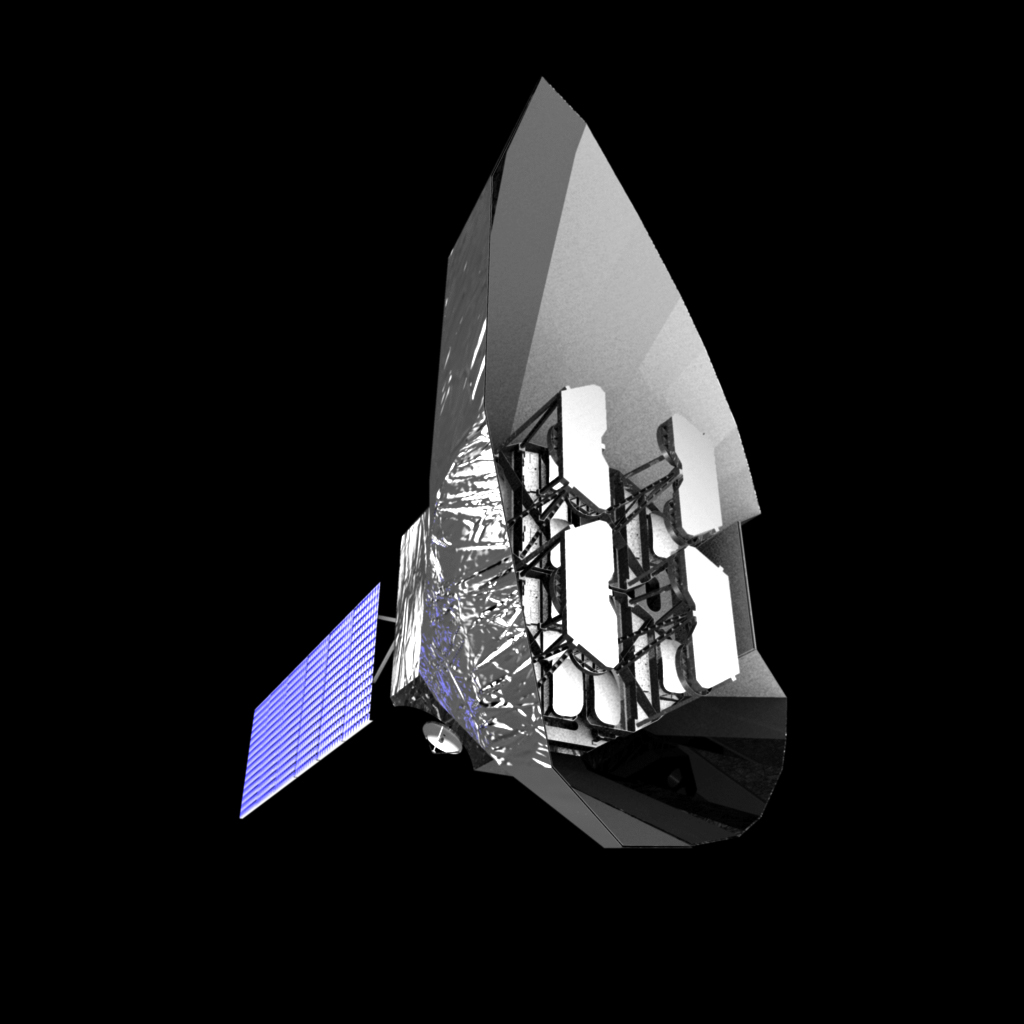
Contact : Enrico Corsaro, Rafael Garcia
Publication :“Spin alignment of stars in old open clusters“
Enrico Corsaro, Yueh-Ning Lee, Rafael A. Garcia, Patrick Hennebelle, Savita Mathur, Paul G. Beck, Stephane Mathis, Dennis Stello & Jérôme Bouvier
Nature Astronomy, le 13 mars 2017.
for an electronic version :

See : the CEA/CNRS press release
See also : Aging stars require we put their record straight (04 January 2016)
Strong magnetic fields discovered in majority of stars (19 January 2016)
Editing : E. Corsaro, R. Garcia, J.M. Bonnet-Bidaud


